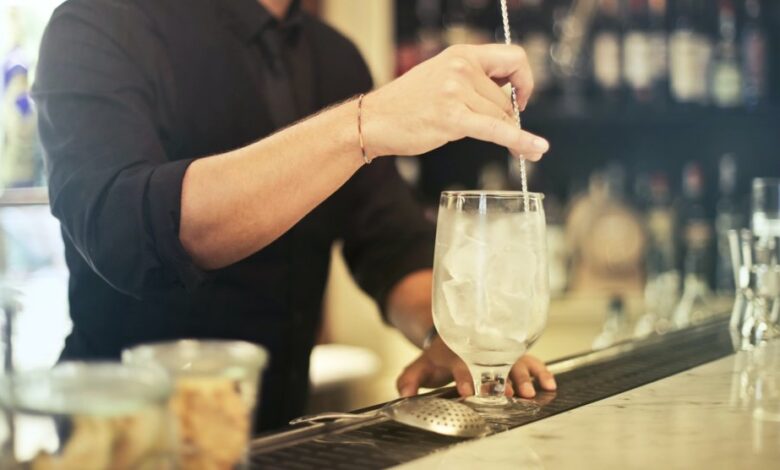From East to West: The Globalization of Baijiu and Its Rise in Popularity

Baijiu, a Chinese liquor known for its unique taste and aroma, has been around for over 1,000 years. But it’s only in recent years that this traditional drink has gained worldwide recognition and popularity. From East to West, people are now discovering the magic of Baijiu and embracing its complex flavor profile. In this blog post, we’ll take you on a journey through the history of Baijiu, how it’s made, the different types available, its health benefits – and explore why it’s quickly becoming one of the most sought-after drinks globally! So sit back with your favorite beverage (perhaps a glass of Baijiu?), as we dive into all things bảie.
What is Baijiu?
Baijiu is a Chinese liquor that has been produced for over 1,000 years and is an integral part of Chinese culture. The word Baijiu (白酒) literally translates to “white alcohol” in English, referring to its clear color. However, the flavor profile of Baijiu can range from sweet and floral to funky and pungent.
Unlike other liquors that are made from grains such as barley or wheat, Baijiu is typically fermented with sorghum. Some varieties may also include rice, wheat, or corn in their base ingredients.
The production process for Baijiu involves several steps including fermentation using yeast strains specific to each distillery and region. Then it’s distilled multiple times before being aged in various materials such as ceramic jars or oak barrels.
Depending on the type of Baijiu being produced, different herbs or spices may be added during the aging process to impart unique flavors.
Baijiu has a distinct taste that sets it apart from other liquors around the world – making it an experience worth trying!
The History of Baijiu
The history of Baijiu dates back over 5,000 years and is deeply rooted in Chinese culture. It was originally used for medicinal purposes before evolving into a popular alcoholic beverage. The word “Baijiu” translates to “white alcohol”, referring to its clear color.
During the Ming Dynasty (1368-1644), Baijiu production became more refined with the invention of distillation techniques. In the Qing Dynasty (1644-1912), Baijiu was widely produced and consumed throughout China, becoming an important part of social gatherings and celebrations.
However, during the early 20th century, Baijiu production suffered due to political turmoil and war. It wasn’t until after China’s economic reforms in the late 1970s that it began regaining popularity both domestically and internationally.
Today, there are hundreds of brands producing different types of Baijiu using various ingredients such as sorghum, wheat, rice or corn. Each type has its unique aroma and flavor profile making it a diverse spirit that continues to evolve with time while still holding onto its rich cultural heritage.
How is Baijiu Made?
Baijiu is a traditional Chinese liquor that has been enjoyed for centuries. Its production process involves several steps, each of which contributes to its unique flavor and aroma.
The first step in making baijiu is preparing the grains. This usually involves soaking them in water overnight before steaming them until they are soft enough to be mashed into a porridge-like consistency.
Once the grain has been prepared, it is mixed with yeast and other ingredients such as barley or peas to start fermentation. The mixture is then left to sit for anywhere from several days to several months depending on the type of baijiu being produced.
After fermentation, the liquid is distilled using a traditional pot still made of clay or copper. The resulting spirit is then aged in barrels made from various materials including oak, sandalwood or bamboo charcoal.
The aged baijiu is blended with other spirits and water before being bottled and sold.
The exact methods used can vary between different regions and distilleries leading to many variations of this beloved drink across China.
The Different Types of Baijiu
Baijiu is a versatile spirit that comes in many different varieties, each with its own unique flavor profile. The most common classification system for baijiu is based on the type of grain used to make it: sorghum-based, rice-based, wheat-based or corn-based.
Sorghum-based baijiu has been around for over 1,000 years and is considered the original form of this Chinese liquor. It has a strong aroma and taste that can be described as floral or fruity. Rice-based baijiu tends to have a lighter taste and smoother texture than sorghum-based varieties.
Wheat-based baijiu is known for its nutty flavor and slightly sweet finish. Corn-based baijiu is less common but still produced in some regions of China. It has a mellow taste with hints of sweetness and vanilla.
Another way to classify baijiu is by region – there are eight major production areas in China, each with its own distinctive style of baijiu. For example, Shandong-style baijiu from eastern China tends to be mild and crisp while Sichuan-style baijiu from southwestern China has a bold spicy flavor.
No matter which type you choose to try, one thing’s for sure – sampling different types of bảie will give you an appreciation for the diversity within Chinese spirits!
The Health Benefits of Baijiu
bảie, a popular Chinese liquor, has been consumed for centuries and is known to have some health benefits. While excessive consumption of alcohol can lead to negative health effects, moderate consumption of Baijiu can be beneficial.
One of the main benefits of Baijiu is its ability to aid in digestion. This is because it contains several types of enzymes that help break down food and promote better digestion. Additionally, the high alcohol content in Baijiu can also stimulate appetite.
Baijiu also has anti-inflammatory properties due to its high concentration of antioxidants. These antioxidants work by neutralizing free radicals in the body which are known to cause inflammation and damage cells.
Moreover, studies suggest that moderate consumption of Baijiu may improve cardiovascular health by reducing blood pressure levels and lowering cholesterol levels. This is because bảie contains compounds such as polyphenols which have been linked to improving heart function.
Drinking small amounts of Baijiu may also boost the immune system as it promotes microcirculation in the body while preventing bacterial growth.
Although these potential health benefits sound promising, it’s important for individuals not to rely solely on consuming alcoholic beverages such as bảie but instead maintain a balanced diet paired with regular exercise for overall wellness.
The Globalization of Baijiu
Baijiu, China’s national liquor, has been around for centuries and is now becoming increasingly popular worldwide. Thanks to globalization, bảie is no longer just a drink that is consumed in China but can now be found in bars and restaurants all over the world.
The process of globalization has played a significant role in introducing people from different cultures to this traditional Chinese liquor. As more people travel the world, they are exposed to new foods and drinks; baijiu being one of them. Through exposure and curiosity about the culture behind it, baijiu has slowly gained popularity outside of China.
In recent years, large foreign companies have also invested in acquiring Chinese Baijiu distilleries. This investment plays an essential role not only in expanding the market reach but also promoting the cultural significance of baijiu beyond its home country.
Moreover, with social media platforms like Instagram or Facebook sharing images and stories about exotic foods and drinks from other countries have become trendy. Inevitably such content includes pictures of Baijiu bottles along with their unique taste profiles serving as influencers for audiences who never knew about this iconic drink before.
It’s safe to say that through globalization and modernization methods such as digital marketing campaigns that promote its unique flavors coupled with strategic investments by foreign distribution partners – we can expect even greater international recognition for bảie!
The Rise in Popularity of Baijiu
Over the past few years, baijiu has seen a significant rise in popularity globally. Once an obscure and niche liquor only consumed in China, it is now gaining traction among Western drinkers.
One reason for this rise in popularity is its unique flavor profile. Baijiu can have strong notes of floral or fruity flavors that are not commonly found in other spirits. This makes it a refreshing and exciting alternative to traditional liquors like vodka or whiskey.
Additionally, the Chinese government has put a lot of effort into promoting bảie as a cultural export. They have hosted various international events and festivals centered around the drink, making it more visible on the global stage.
Furthermore, many famous celebrities and influencers have been spotted drinking baijiu publicly. This exposure has helped to create buzz around the spirit and increase its appeal to younger generations who value authenticity and uniqueness.
Baijiu’s reputation as a luxury item also contributes to its growing popularity worldwide. High-end brands like Maotai have become status symbols for wealthy consumers both inside and outside of China.
While still relatively unknown compared to other spirits on the market, baijiu’s rising popularity seems set to continue thanks to these factors helping it break into new markets across the globe.
Conclusion
bảie, the traditional Chinese liquor, has been around for centuries and continues to be an integral part of Chinese culture. However, with globalization and increasing interest in international cuisine and beverages, baijiu is slowly making its way into the world market.
As we have seen, there are many different types of bảie made from various grains and fermentation processes. Each type has a unique flavor profile that makes it stand out from other spirits.
Despite being relatively unknown outside of China until recently, baijiu’s popularity is on the rise as more people discover this unique spirit. With its rich history and cultural significance combined with its bold flavors and health benefits, it’s no wonder why more people are becoming fans of this traditional drink.
So whether you’re a connoisseur or new to the world of baijiu, take a sip and experience all that this ancient liquor has to offer – from East to West!



